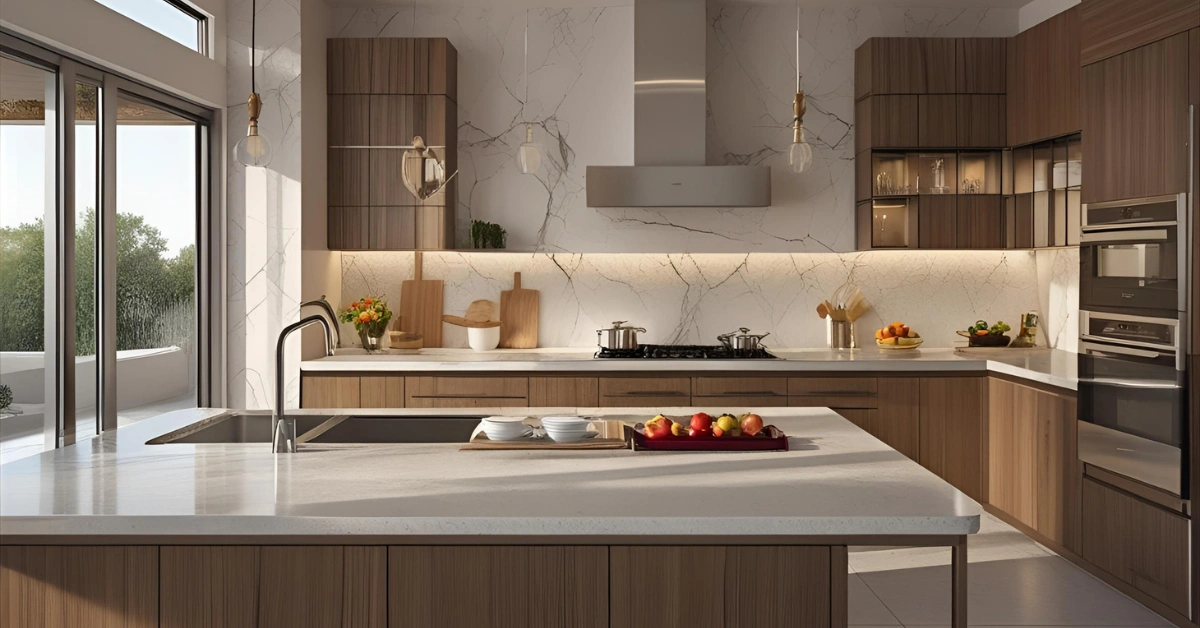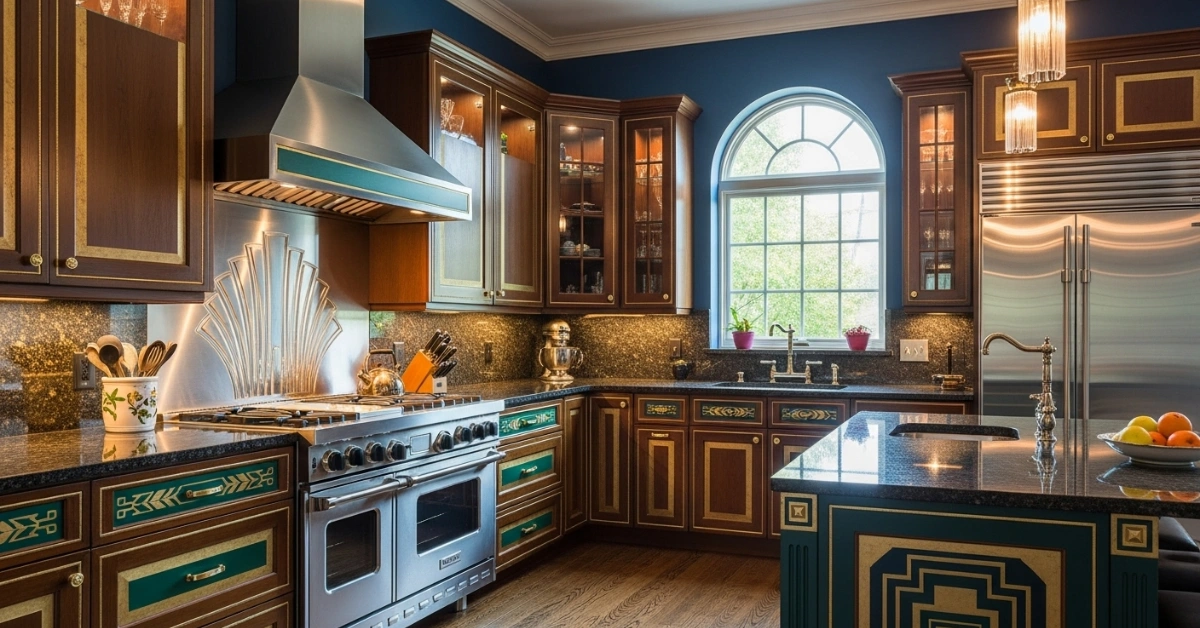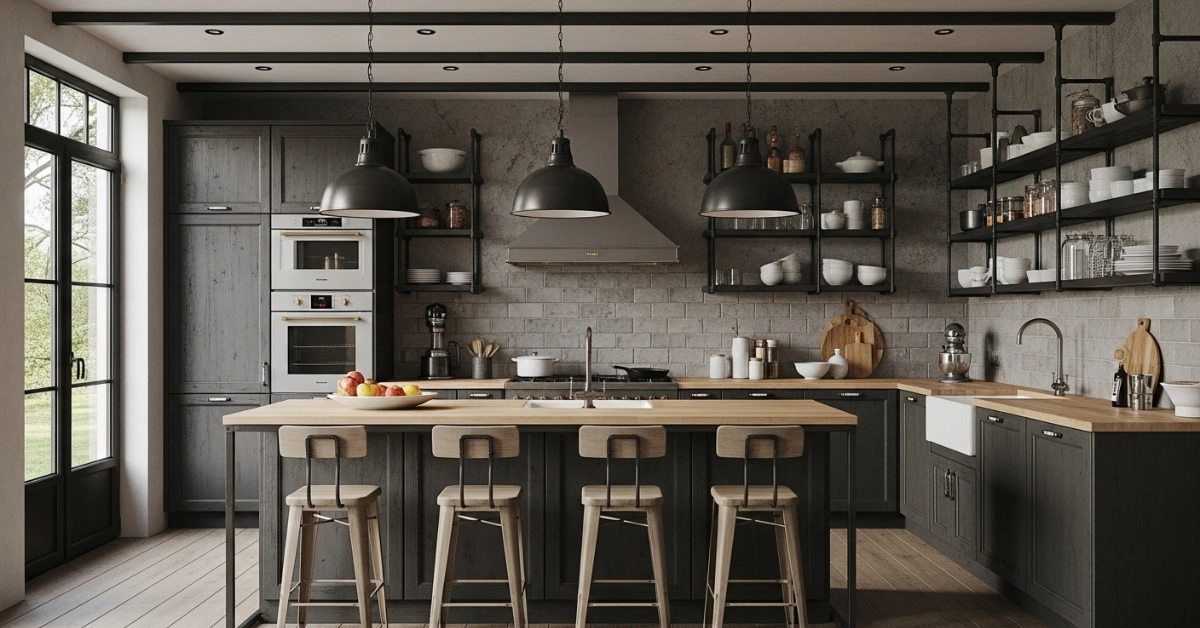The Ultimate Guide to Choosing Kitchen Cabinets: Tips for 2025
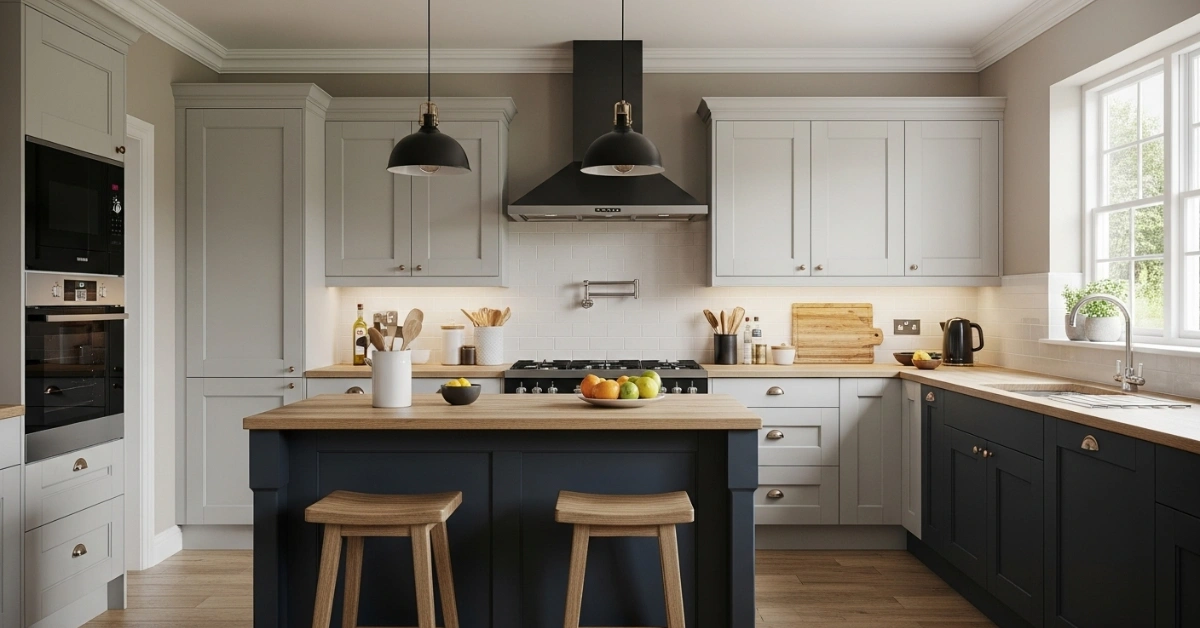
Your kitchen is the heart of your home, but outdated or poorly designed cabinets can make it feel cramped, cluttered, and uninspiring. Choosing kitchen cabinets is more than just picking a color or style, it’s about creating a space that’s functional, beautiful, and tailored to your lifestyle.
This guide offers a comprehensive roadmap to help you navigate the process of selecting cabinets that elevate your kitchen’s aesthetic and usability. From understanding materials and styles to budgeting and installation, we’ll cover everything you need to make an informed decision that stands the test of time.
Why Kitchen Cabinets Are the Backbone of Your Kitchen
Cabinets define the look, feel, and functionality of your kitchen. They occupy significant visual and physical space, making them a focal point of any kitchen design. Beyond aesthetics, cabinets provide essential storage, helping you keep your space organized and efficient. According to the National Kitchen and Bath Association (NKBA), well-designed cabinets can increase your kitchen’s value by up to 7% [Source: NKBA 2024 Design Trends Report].
When choosing kitchen cabinets, consider how they align with your daily routines, cooking habits, and design preferences. The right cabinets can transform your kitchen into a space that’s both practical and inviting.

Key Factors to Consider When Choosing Kitchen Cabinets
Before diving into styles and finishes, evaluate these critical factors:
- Storage Needs: Do you need deep drawers for pots or pull-out shelves for spices?
- Budget: Are you investing in custom cabinets or opting for budget-friendly stock options?
- Durability: Will the materials withstand daily wear and tear?
- Aesthetic: Do the cabinets complement your home’s overall style?
- Space: How can cabinets maximize your kitchen’s layout?
Addressing these questions early ensures your choices align with both your practical needs and design goals.
Types of Kitchen Cabinets: Finding the Perfect Fit
Choosing kitchen cabinets starts with understanding the different types available. Each option offers unique benefits, so let’s explore the main categories.
Stock Cabinets
Stock cabinets are pre-manufactured and available in standard sizes. They’re budget-friendly and ideal for homeowners looking for quick, affordable solutions.
- Pros: Cost-effective, widely available, fast delivery.
- Cons: Limited customization, fewer style options.
- Best For: Small kitchens or rental properties.

Example: A friend recently renovated a rental property using stock cabinets from a home improvement store. The crisp white shaker-style cabinets gave the kitchen a modern look without breaking the bank.
Semi-Custom Cabinets
Semi-custom cabinets offer a balance between affordability and personalization. You can choose from a range of finishes, sizes, and features while staying within a reasonable budget.
- Pros: More design flexibility, better quality than stock options.
- Cons: Longer lead times, higher cost than stock cabinets.
- Best For: Homeowners wanting a tailored look without custom pricing.

Custom Cabinets
Custom cabinets are built to your exact specifications, offering endless design possibilities. They’re perfect for unique kitchen layouts or specific aesthetic goals.
- Pros: Fully personalized, high-quality craftsmanship.
- Cons: Expensive, longer production times.
- Best For: Luxury kitchens or homes with non-standard layouts.
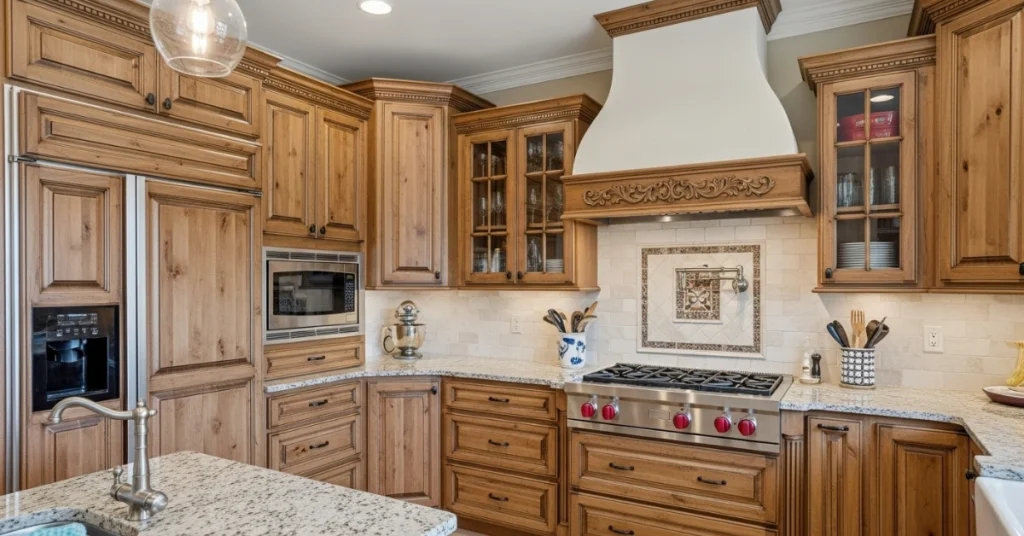
Designer Tip: “Custom cabinets are worth the investment if you have an oddly shaped kitchen or want unique features like built-in wine racks,” says interior designer Sarah Thompson.
Table: Comparing Cabinet Types
| Type | Cost Range | Customization | Lead Time | Best For |
|---|---|---|---|---|
| Stock | $100–$300 per linear foot | Low | 1–2 weeks | Budget renovations |
| Semi-Custom | $200–$600 per linear foot | Moderate | 4–8 weeks | Mid-range projects |
| Custom | $500–$1,200+ per linear foot | High | 8–12 weeks | Luxury or unique kitchens |
Materials Matter: Choosing Durable and Stylish Options
The material of your cabinets affects their durability, maintenance, and appearance. Here’s a breakdown of popular choices.
Solid Wood
Solid wood cabinets, like oak, maple, or cherry, are timeless and durable. They can be stained or painted to suit any style.
- Pros: Long-lasting, natural beauty, easy to refinish.
- Cons: Higher cost, susceptible to moisture damage if not sealed.
- Popular Choices: Maple for a smooth grain, cherry for a warm tone.

Plywood
Plywood cabinets are made from layered wood sheets, offering strength and affordability.
- Pros: Resistant to warping, cost-effective.
- Cons: Limited aesthetic compared to solid wood.
- Best For: Budget-conscious homeowners seeking durability.
Medium-Density Fiberboard (MDF)
MDF is an engineered wood product that’s smooth and ideal for painted finishes.
- Pros: Affordable, great for modern designs.
- Cons: Less durable, prone to water damage.
- Best For: Sleek, contemporary kitchens.

Thermofoil
Thermofoil cabinets feature a vinyl layer over MDF, mimicking the look of painted wood.
- Pros: Easy to clean, budget-friendly.
- Cons: Can peel over time, limited to modern styles.
- Best For: High-traffic kitchens needing low maintenance.
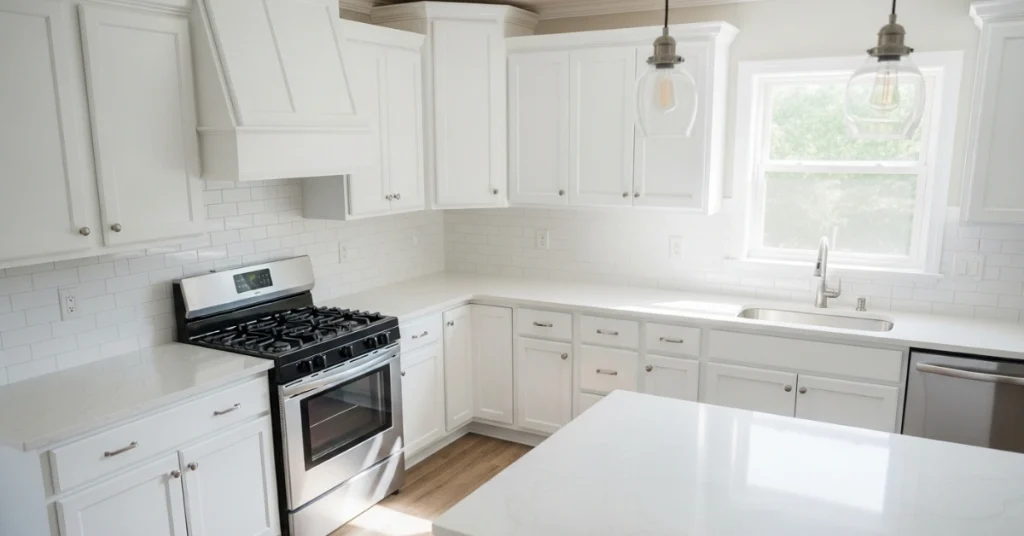
Real-World Example: In my own kitchen remodel, I chose maple cabinets for their durability and versatility. After five years, they still look brand new with minimal upkeep.
Popular Kitchen Cabinet Styles for 2025
Choosing kitchen cabinets also means selecting a style that reflects your taste. Here are the top trends for 2025, based on insights from the NKBA and Houzz.
Shaker Style
Shaker cabinets feature clean lines and a minimalist design, making them versatile for both modern and traditional kitchens.
- Why It Works: Timeless appeal, pairs well with bold hardware.
- Best Finishes: White, navy, or natural wood tones.

Slab (Flat-Panel)
Slab cabinets have a sleek, flat surface, perfect for contemporary kitchens.
- Why It Works: Creates a streamlined, modern look.
- Best Finishes: Matte black, glossy white, or wood veneer.
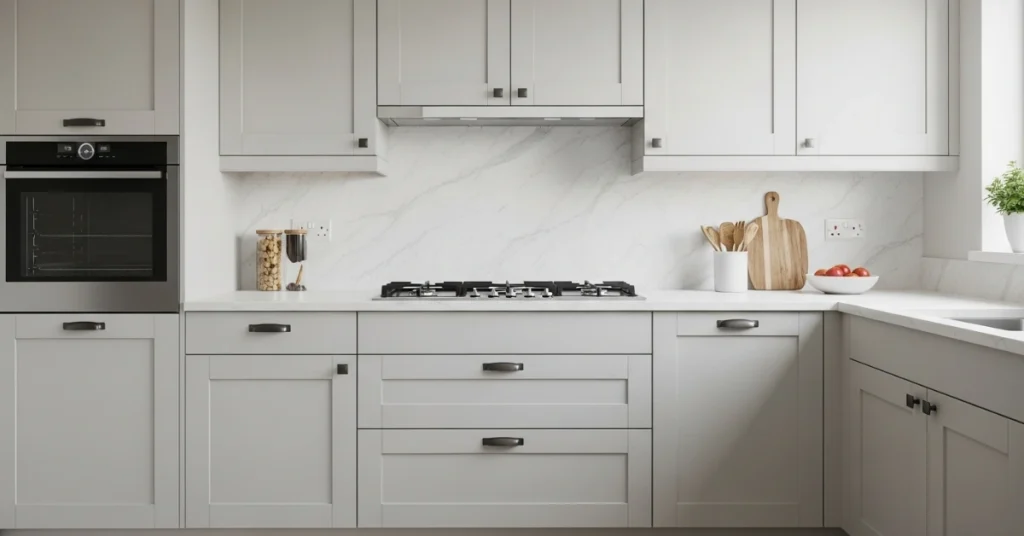
Glass-Front Cabinets
Glass-front cabinets add elegance and make small kitchens feel more open.
- Why It Works: Showcases dishware, adds visual interest.
- Best Finishes: Frosted or clear glass with white or wood frames.

Open Shelving
While not traditional cabinets, open shelving is trending for its airy, accessible feel.
- Why It Works: Displays decor, easy to access daily items.
- Best Finishes: Wood or metal for a rustic or industrial vibe.

Designer Tip: “Mixing glass-front cabinets with solid panels creates a balanced look that’s both functional and stylish,” says designer Emily Carter.
Color and Finish Trends for Kitchen Cabinets
The right color and finish can transform your kitchen’s mood. Here are the top picks for 2025:
- Bold Neutrals: Warm grays, soft greens, and creamy beiges are replacing stark whites.
- Two-Tone Cabinets: Pairing contrasting colors, like navy lowers and white uppers, adds depth.
- Matte Finishes: Matte black or charcoal cabinets offer a sophisticated, modern edge.
- Natural Wood: Light oak or walnut finishes bring warmth and texture.

Pro Tip: Test paint samples under your kitchen’s lighting to ensure the color looks right day and night.
How to Budget for Your Kitchen Cabinets
Choosing kitchen cabinets requires balancing cost and quality. Here’s how to plan your budget effectively.
Set a Realistic Budget
Cabinet costs vary widely based on type, material, and size. A typical kitchen remodel spends 25–35% of the budget on cabinets, per the NKBA. For a $20,000 remodel, that’s $5,000–$7,000 for cabinets.
Cost-Saving Tips
- Opt for Refacing: Refacing existing cabinets can save up to 50% compared to full replacement.
- Mix and Match: Use custom cabinets for key areas and stock cabinets elsewhere.
- Shop Sales: Major retailers often offer discounts during holiday sales.
Hidden Costs to Watch For
- Installation: Professional installation can cost $50–$100 per linear foot.
- Hardware: Knobs and pulls can add $5–$50 per piece.
- Delivery Fees: Factor in shipping for online purchases.

Example: A colleague saved thousands by refacing her oak cabinets with a fresh white finish instead of replacing them entirely.
Maximizing Storage with Smart Cabinet Features
Storage is a top priority when choosing kitchen cabinets. Modern designs offer innovative solutions to keep your kitchen organized.
Must-Have Features
- Pull-Out Shelves: Easy access to deep cabinets.
- Lazy Susans: Perfect for corner cabinets.
- Drawer Organizers: Keep utensils and spices tidy.
- Soft-Close Hinges: Prevent slamming and extend cabinet life.

Layout Tips for Small Kitchens
- Use tall cabinets to maximize vertical space.
- Install open shelves for frequently used items.
- Choose light-colored cabinets to make the space feel larger.

Designer Tip: “In small kitchens, prioritize function over flair. Pull-out drawers and corner organizers can double your usable space,” says designer Mark Rivera.
Installation: DIY or Professional?
Installing kitchen cabinets is a significant undertaking. Here’s how to decide between DIY and hiring a pro.
DIY Installation
- Pros: Saves money, satisfying for handy homeowners.
- Cons: Time-consuming, requires precise measurements.
- Best For: Small projects or experienced DIYers.
Professional Installation
- Pros: Ensures proper alignment, faster process.
- Cons: Higher cost, scheduling challenges.
- Best For: Large or complex kitchen layouts.

Real-World Example: I attempted a DIY cabinet installation for a small pantry and regretted not hiring a pro—the uneven alignment took hours to fix!
Maintenance Tips to Keep Cabinets Looking New
Proper care extends the life of your cabinets. Follow these tips:
- Clean Regularly: Wipe with a damp cloth and mild soap to remove grease.
- Avoid Moisture: Dry spills immediately to prevent warping.
- Polish Annually: Use a wood-safe polish for natural finishes.
- Check Hardware: Tighten loose screws to maintain functionality.

Common Mistakes to Avoid When Choosing Kitchen Cabinets
Even seasoned homeowners make mistakes. Here’s what to watch out for:
- Ignoring Layout: Ensure cabinets fit your kitchen’s workflow (e.g., the “kitchen triangle” of sink, stove, and fridge).
- Skimping on Quality: Cheap materials may save money upfront but cost more in repairs.
- Overlooking Hardware: Knobs and pulls impact both style and usability.
- Forgetting Lighting: Under-cabinet lighting enhances functionality and ambiance.
Eco-Friendly Options for Sustainable Kitchens
Sustainability is a growing priority. When choosing kitchen cabinets, consider these eco-friendly options:
- FSC-Certified Wood: Sourced from responsibly managed forests.
- Low-VOC Finishes: Reduce harmful emissions for better indoor air quality.
- Recycled Materials: Some brands use reclaimed wood or recycled MDF.

Example: A local designer I worked with used FSC-certified walnut cabinets for a client’s eco-conscious kitchen, creating a stunning yet sustainable space.
Inspiration: Real Kitchen Cabinet Ideas for 2025
Need inspiration? Here are three design ideas to spark your creativity:
- Modern Minimalist: Sleek white slab cabinets with matte black handles and quartz countertops.
- Rustic Charm: Natural oak shaker cabinets paired with brass hardware and a butcher-block island.
- Bold and Eclectic: Two-tone cabinets (emerald green lowers, cream uppers) with gold accents.

Browse platforms like Houzz or Pinterest for more ideas tailored to your style.
Conclusion: Start Choosing Kitchen Cabinets with Confidence
Choosing kitchen cabinets is a pivotal decision that shapes your kitchen’s look and functionality for years to come. By understanding your needs, exploring styles, and prioritizing quality, you can create a space that’s both beautiful and practical. Whether you’re drawn to sleek modern designs or timeless shaker cabinets, this guide equips you with the knowledge to make the right choice.
Ready to transform your kitchen? Start by assessing your storage needs and browsing local showrooms or online retailers for inspiration. Share your dream kitchen ideas in the comments or contact a professional designer to bring your vision to life!

